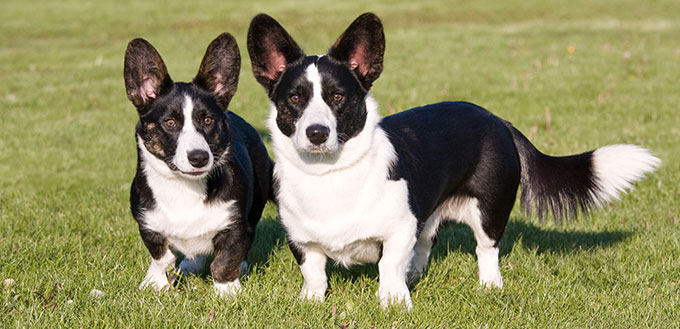The Pug dog breed has a lot of history in their small body. Part of the toy breed group, this little pup is known for being energetic but also for having various medical issues that come with its short snout. To really understand Pugs, dog owners should be willing to research the breed in all of its glory and find out where breeding has failed this particular dog breed and given it the potential for multiple health conditions.
Breed Overview
| Dog Breed Group | Toy Dog Breed |
|---|---|
| Height | 10 to 13 inches |
| Weight | 14 to 18 pounds |
| Life Span | 13 to 15 years |
| Coat Type | Short, smooth |
| Coat Colors | Fawn, black |
| Registered by AKC | 1885 |
History of the Pug
Although the Pug breed we know today wasn’t recognized as its own breed by the American Kennel Club until the late 19th century, they’ve actually been around for an extremely long time.
The origins of the Pug can be found in China’s history. Pug genetics have been dated back to the Han Dynasty, which took place between 206 BCE and 200 CE. Historians believe that the Pug dog breed shares DNA with the Tibetan Mastiff, lending even more evidence to the Pug’s existence in the East.
Other breeds that are similar to the Pug from this time were the Lion Dog, the Lo-sze, and the Pekingese. The Foo Dogs of China are also said to be some form of ancestor to today’s Pug breed, and other dogs with shared traits were discovered in Tibet and Japan.
It wasn’t until the late 16th century, when China and Europe began trading with one another, that the first few Pug dogs appeared in the west. It’s said that Dutch traders owned the first of this breed in Europe; though the breed was called Mopshond by their people.
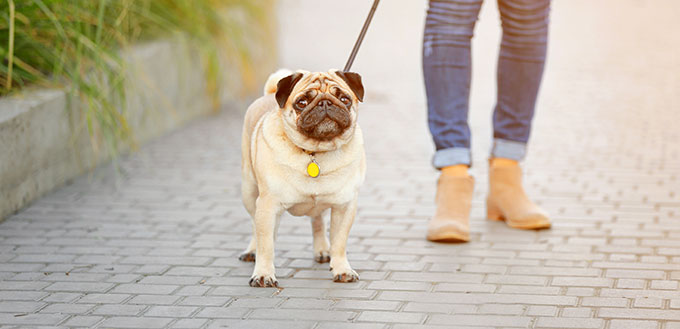
Why Were Pugs Bred?
Pugs were bred to be lapdogs. They have lived luxurious lifestyles throughout history, often belonging to royal families across the world.
Back in their origin country, Pugs were adored by China’s Emperors, and many of these dogs would have been guarded by soldiers if they were considered to be prized and beloved members of their families. They were bred to be small pets, rather than to become working dogs like so many other breeds that are around today.
The Rise of Pug Popularity
After being well-loved by the Emperors of China and eventually coming across to Europe and the rest of the world, the Pug breed began to take their place in the laps of more royal families.
The Pug was the official dog breed of the House of Orange in Holland back in the late 16th century, and the dogs that lived with the Prince of Orange came with him to live in England when he came to take the throne from James the Second.
The black Pug, which evidently existed several centuries ago as it still does today, was painted by the famous William Hogarth in his art. Goya also depicted Pugs in his own paintings.
Marie Antoniette owned a Pug before she married, as did Josephine Bonaparte. Queen Charlotte of England adored her Pugs and even founded an entire line of the breed called the Morrison line. The second line of the English Pug breed was created by the Lord and Lady Willoughby d’Eresby, who founded their Pug line through dogs that were brought in from either Russia or Hungary.
The British gained more variations of the Pug when they overran the Chinese Imperial Palace and took some of the Chinese Pug puppies and adult dogs back to England with them back in 1860.
Pugs didn’t get their start in the U.S. until after the Civil War. They were popular at first, but that popularity waned over time. Pugs gained their own Dog Club in 1931.
A Few More Words About Pug
With a life expectancy of 13 to 15 years, Pugs live a decent amount of time. They are considered to be a dog of a higher maintenance level than others; if only for their grooming needs, potential medical issues, and shedding habits.
Pugs cannot tolerate high temperatures or humidity. Their short muzzle prevents them from breathing as fully as other dog breeds do, which causes them to wheeze, snort, and snore. Pugs are also prone to getting eye infections and injuries because of the way their eyes protrude from their face.
They aren’t a canine that a dog owner could have without making some lifestyle adjustments. Pugs were bred as companion dogs and many suffer from separation anxiety. If you’re planning on leaving your pup at home for several hours a day while you’re at work, you’ll be coming back to an upset pet and probably some house damage. Pets with separation anxiety (or a tendency to be dependent on humans) require the presence of a trusted person to be around as much as possible.
Pug Dog Breed Appearance
The average Pug will be anywhere from 14 to 18 pounds and have a height of 10 to 13 inches from the ground to their shoulder. This is true for both the female and the male of the species, though you may find that your pups differ in size if you have more than one Pug running around.
As long as your vet says that your Pug is healthy, small discrepancies in height or weight are normal in any breed of dog. There are lots of factors that can affect height and weight in canines – including castration, health issues, and genetics.
Expect a Pug to be small, heavyset, thick, and square-shaped. Their faces are full of large wrinkles, which have been praised as charming by breeders for centuries. Back in China, Pugs who had wrinkles in the shape of certain Chinese characters (such as the character for “Prince”) were prized dogs to own.
Alongside their wrinkly face, these pups have big, almost bulbous eyes, which are dark in color. Their cheeks are covered in beauty spots and their muzzle or mask is usually black.
Other features include the Pug’s curled tail, short-haired coat, and a jaw where their lower teeth extend over the upper teeth. Pugs have a very identifiable look, that much is sure.
Recognized Coat Colors and Markings
Although the coat of a Pug is short, the dog is double-coated. Double-coated dogs have to be groomed in particular ways and should never be shaved.
All dogs of this breed have a black muzzle that is short and flat. It’s common for the Pug to have a fawn-colored coat, but dogs that do have a fawn-colored coat may have slightly tinted fur. For example, a fawn-colored Pug could have apricot or silver undertones to their coat. The black Pug also exists and is considered one of the two official Pug colors.
Black and fawn-colored dogs of this breed are the only coats that are recognized in American Kennel shows and competitions. Other coat colors do exist, but they aren’t recognized by the American Kennel Club and may work against your dog if you were to enter them in a show.
Unofficial Pug coat colors are as follows:
- White
- Silver
- Panda
- Black and cream
- Black and tan
- Brown
- Cream
- Albino
- Sable
- Black and fawn sable
- Brindle
- Blue Merle
These coat colors are largely considered genetic mutations and are the result of further unnecessary breeding of the Pug. Of these, brindle-colored pups are the most expensive and the rarest.
The tail of the Pug is the same color as their body in recognized coat colors. Some unofficial colors may see a different tail color or perhaps a tail with a pattern. But the tail should be the same color as the body in Pug with officially recognized coat colors.
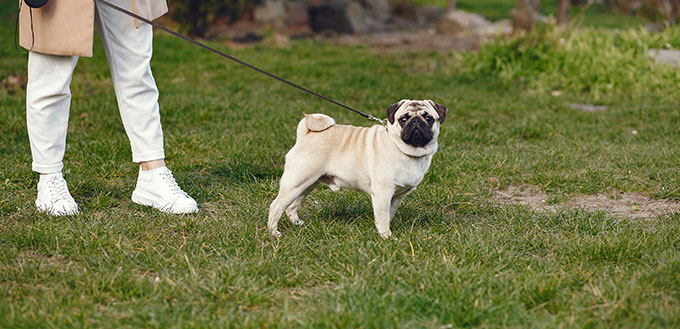
Interesting Facts
- The Pug is one of the oldest breeds of pet dog
They’ve been around since the Han Dynasty and were bred to be companion dogs for Chinese Emperors. These pets have lived many royal lives for the last two thousand years.
- The name “Pug” probably comes from the Latin word “Pugnus”
“Pugnus” translates into “fist”. Pugs have been said to have a face that looks somewhat like a fist, so there’s some speculation that this is where their name originally came from. They have different names in other countries, of course, but the origin of the name “Pug” has never been confirmed.
- Pugs are not part of the Bulldog family
Despite some shared traits and looks, Pugs and Bulldogs are not related at all. Actually, the Pug is closer to the Pekingese; another dog bred to be companions for Chinese royalty.
- Pugs are great at dog sports
Although many people would think that a Pug has a disadvantage because of its short muzzle, a well-trained Pug is just as good at dog sports as other breeds are. They may be one of the more stubborn breeds, but they’re highly teachable.
Pug Temperament
There are many dog breeds out there that are great guard dogs and hunting dogs. The Pug is not one of them. Pugs were bred to be companions to humans and are inclined to enjoy a life of luxury with very little responsibility. They are sedentary pups, happy to keep you company by sitting on your lap or next to you on the couch.
A Pug is at their most relaxed when they are chilling out with their human. Essentially, you’ll have yourself a couch potato dog. Perfect for people who work from home or spend most of their week at home and want some canine company. They love human companionship.
Though they typically have a calm temperament, Pugs do have a playful attitude when the mood strikes them. This is great for a family that has children because the relaxed temperament of the Pug means you’ll never be worried about behavioral mishaps. These pups do not bite people without reason. They’re quite happy to lay around in your home without a care.
Your Pug will be fine around other animals and people, as long as they’ve been properly socialized. Socialization is one of the most important aspects of training a young puppy because it gives them the skills to interact with others calmly.
Keeping Your Pug Entertained
Because Pugs aren’t particularly active dogs, keeping them entertained is much easier for owners than it would be if they had chosen another pet to bring home. They require little exercise each day, but they do love playing with their owners and other dogs that they are used to.
Be prepared to set aside some time to play with your pet each day. Even 15 minutes will make your dog extremely happy and boost their attitude to something more positive. Children may enjoy taking their pets outside to play fetch or run a homemade obstacle course.
If you have a pool, your pug may enjoy going for a swim. Keep them out of deep waters, though! Pugs do great with doggy paddling but they aren’t strong swimmers. The shallow end of your pool or a kiddie pool will be more than enough for them. Adults looking after the dog while they’re swimming should be aware that this breed doesn’t breathe well when exercising so their swimming time should be limited. Never leave a swimming Pug by themselves.
Pug Care
With their little legs and a head full of wrinkles, this dog is a great pet to have at home. Their expression is usually friendly, helped along by their big, wide eyes. In the event you do decide to take on a Pug as a pet, you’ll need to know how to properly care for them in all kinds of situations. Thankfully, the care of the average Pug isn’t difficult.
Feeding and Grooming
How Much Should Pug Eat a Day?
Food and fresh water are the two most important things that you need to supply for your dog each day. A good rule for feeding puppies of this breed is to give them approximately one ounce of food per one pound of their body weight. Once they reach adulthood, half that amount.
An adult Pug often has a weight between 14 and 18 pounds, so they should be eating around 7 to 9 ounces of food, depending on what your dog’s weight actually is.
Now, the thing about this breed is that they will overeat if you let them. You need to completely control their diet and make sure they can’t get to treats, kibble, or leftovers when they’ve had their own meal. This can be tricky in multi-dog households, but not impossible.
Breeds that overeat make the care aspect of owning a dog slightly more difficult. Be prepared to separate your Pug from other food bowls and even watch them eat during meal times. We would not recommend an automatic feeder for this breed.
For fresh water, your dogs should be drinking around one ounce per pound of their body weight. Food and water requirements are actually fairly easy to remember with these dogs.
If you wish to know more about their food requirements, click here.
How do You Groom a Pug Dog?
Pugs thoroughly enjoy being groomed and love the attention given to them when this kind of care is used. Though most dogs don’t need to be groomed daily, your pet certainly won’t complain if you take a soft bristle brush to their head, body, and legs each day. In fact, a few minutes of brushing each day will help blood circulate around a Pug’s skin, keeping their coat in amazing condition.
More than that, you can use this opportunity to check over the length of your pup and make sure that there aren’t any parasites, injuries, or soreness from their wrinkles. The care of these pups requires a gently but thorough hand because dogs with wrinkles are prone to skin conditions and similar issues.
You should gently check over your dog’s entire head and follow the length of your pup down to each foot. This way, you can be sure that your pup’s skin is perfectly healthy.
Not all dogs of this breed are double-coated, but most are. The most common color is the fawn-coated version of this breed. A fawn-colored pup will be double-coated, while a black Pug will not be. Regular brushing will help prevent too much fur from being shed all over your home. Pugs do shed a lot, but daily grooming can stop them from covering your house in a fine layer of doggy fur.
When you’re grooming your dog, be sure to specifically check the main nose wrinkle on their head. This part of their head can collect dirt and other things, which can go on to cause infections. A dry nose can be soothed with a touch of petroleum jelly rubbed over the flesh. Similarly, check your pup’s eyes for any build-up that needs to be cleared away (this will prevent eye infections, which Pugs are prone to).
Your Pug’s ears need a little special attention, too. The ears of this breed will seem to attract dirt and should be cleaned with a gentle cotton bud that has been lightly moistened. Red ears or ears that start to smell may need to be checked out by a vet. These are signs of an infection of the ears.
Remember to check each foot of your pup by gently picking up their legs and checking for anything that may have embedded itself in their paw pads. Do this after every outdoor adventure, not just at bathtime.
You may also like our guides on the Best Dog Ear Cleaners, Best Paw Protection Waxes, Best Dog Paw Washer, and Best Dog Wipes.
Dealing with Pug Shedding
When grooming your pup, we recommend brushing them while you’re both sitting outside on a mat. This will greatly reduce the amount of fur and dander that your pup treks around your house. During the colder months, you could brush your best friend in the bathroom or use the same mat in an easy-to-clean room of your house.
Lint rollers are a great investment for any pet owner. They’re a quick way to pick fur up off of clothing or furniture. Vacuum your home daily in areas where your dogs like to be – you’d be surprised what a few days of fur build-up can look like in a living room.
Take a look at our articles on Brushes for Short Hair Dogs, Dog Shedding Brush, and Dematting Tools for Dogs.
How Often Should You Bathe Pugs?
You can bathe your pet in a sink or swallow bathwater. Use warm water, not too hot, not too cold. The number of baths that your pup will need will depend on how active they are outside. Pugs that enjoy rolling around in the dirt should be bathed once a month or as needed, while other dogs may only need to be bathed a handful of times a year.
Use mild shampoos that are formulated for dogs. This will keep your pup’s coat nice and shiny and will prevent any necessary chemicals from stripping the oils in your dog’s fur.
Check out our dog grooming guides, such as the best dog shampoo for puppies, best dog shampoo, best dog conditioners, and tear stain remover for dogs.
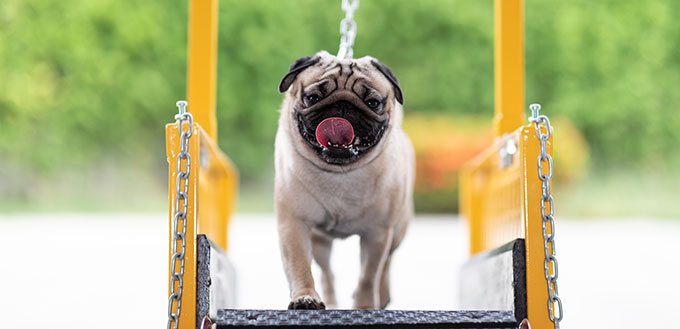
Pug Health and Health Conditions
What Health Conditions do Pugs Have?
Like many other toy breeds, Pugs have a set of health conditions to go along with their small size. Toy breeds are bred down to their compact size from larger ancestral dog breeds, which can greatly impact their health today. Though the Pug is often considered a healthy pup to own, some do develop medical issues that are the direct result of lack of care and/or genetics.
Pug Dog Encephalitis is the main concern of any owner. This is a fatal brain disease that only Pugs contract – PDE cannot be tested for or treated. It is identified after the dog passes away and the inflamed brain tissue is examined for markers that point towards the condition. PDE is seen in young pups, causing seizures, circling, blindness, coma, and death.
More research is being completed on the disease all the time because so little is known about why it occurs. There may be a genetic influence.
Other common health conditions are as follows:
- Cheyletiella Dermatitis
Also known as “Walking Dandruff”, this is a skin condition that is caused by small mites attacking your pet. A sign of this condition is heavy heavy dandruff and dry skin down the center of the Pug’s back. The mites that cause this skin condition are contagious, so every pet in your home must be treated when it’s identified.
- Corneal Ulcers
The Pug’s eyes can be injured easily. They can get infections and develop ulcers on the cornea. Untreated ulcers on the whites of your dog’s eyes can cause blindness or possibly rupture the eye.
- Keratoconjunctivitis Sicca and Pigmentary Keratitis
Two eye conditions seen in this breed that are a form of dry eye. Pigmentary keratitis can be identified by the black spots that it causes on the cornea.
- Hemi-vertebrae
Short-nosed breeds have the potential to have misshaped vertebrae. This causes those dogs to stagger, walk in an uncoordinated way, and have a weak walk when they’re young. Pugs can also suffer from hip dysplasia and other joint issues.
- Idiopathic Epilepsy
Seizures that appear in some canines for no apparent reason. If your pup is having seizures, seek veterinary advice immediately.
- Infections
From Staph infections caused by bacteria on the skin to yeast infections of your pup’s ears, Pugs are prone to various infections. Pretty much every inch of your pet has the potential for infection if they aren’t properly groomed and cared for, with skin infections being the number one issue.
- Nerve Degeneration
Older Pugs have the potential to suffer from nerve degeneration. It can be seen in dogs that stagger, have issues jumping, drag their rear along the floor, or are incontinent. The front legs of the pup will remain strong, which leads many owners to purchase carts or doggy wheelchairs.
Exercising Your Pug
The exercise requirements of toy breeds are significantly less than those of larger canines. It’s good to take your Pug dog on a walk every day to help extend their life expectancy.
Try these great exercise ideas:
- Walk to a local park
- Build an obstacle course in your backyard
- Try dog sports
- Teach an active command, such as “come here”.
How to Train a Pug
Pugs are intelligent canines, even if they come off as lazy pups with little energy. They’ll get up and go just as quickly as any other non-working adult dog would. Train a Pug the same that you’d train any other canine – with lots of positive reinforcement, treats, and patience.
Always remember to walk away from your pet when you feel that they are misbehaving. Ignoring your fluffy friend is the quickest way for them to understand that they’ve done something wrong. Get your family involved so that you’re all on the same level in regard to your dog’s training.
Start training from a young age and you’ll quickly see your canine blossom into a wonderful member of the family.
Are Pugs Hard to Potty Train?
They can be, unfortunately. Pugs are one of the harder breeds to potty train because they’re so attached to the people they live with. They want to be around people, which makes them forget to get up and go potty when they need to.
Absorbent pads are going to be a huge necessity when you’re potty training your Pug. It’ll take around three months for your Pug to be fully potty trained and you’ll certainly need to keep the disinfectant and floor wipes handy during that time.
Take a look at our article on the Best Indoor Dog Potty.
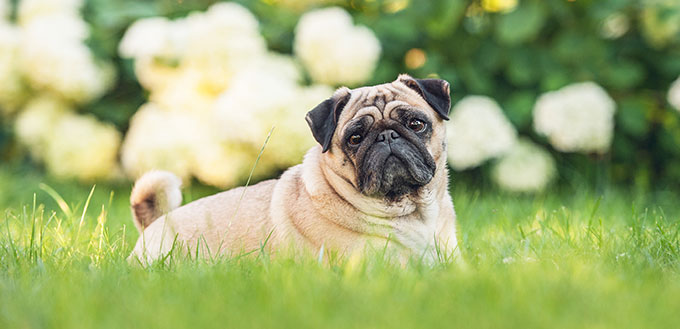
Adopt Don’t Shop
When you go to meet a Pug puppy that you want to adopt, be sure to meet at least one of the puppy’s parents during that visit. Your Pug puppy is more than likely going to pick up several of the prominent personality traits that their adult parents have, so meeting one of them will allow you to see what kind of temperament they might end up with.
All dogs can be trained, but they also have their own personalities. It’s much more difficult to train a dog’s personality than to train them in obedience and tricks from a young age.
Ask the shelter or breeder if the puppy has begun being socialized yet. A puppy that is grouped with other puppies of the same litter is going to do much better with other dogs than a puppy that is by itself. Puppies learn a lot in the weeks before they leave their mother; including bite inhibition, which is a crucial thing for all puppies to learn.
A Pug is certainly one of the easier dog breeds to own. They have the potential for medical issues, sure, but many breeds do. They’re calmer canines, suited to a household that doesn’t get busy or crowded.
Find a Rescue Group
The Pug Dog Club of America has a list of rescue groups on their website that is informative and easy to access. We’ve listed some of those groups below:
- Pug Pros – Pug Rescue of Sacramento, California
- Colorado Pug Rescue, Colarado
- Ohio Pug Rescue, Inc., Kentucky
- For The Love of Pugs, Michigan
- Dallas Fort Worth Pug Resuce, Texas
- Puget Sound Pug Dog Club, Washington
Reputable Breeders
Finding a reputable breeder is a task in itself. The PDC of America has a list of vetted breeders on their website, which would certainly be the best place for anyone to start looking.
Pug breeders that aren’t checked on by organizations like the PDC cannot be controlled. This is usually where backyard breeding comes into play, and you get awful people not looking after their dogs because they just want to make a quick buck. Avoid adopting puppies off of online marketplaces and stick to vetted and approved breeders.
Never pay upfront and always meet the pups before you decide to take one home. You can tell a lot about the type of adult a puppy will be just by watching them interact with their littermates for a while.
How Much do Pugs Cost?
Fawn-colored dogs of this breed are more common, so you can buy them for cheaper than you’ll find a black Pug being sold for.
Expect a Pug to cost a minimum of $75. They aren’t an expensive canine to purchase at all, but the rarer the color, the more they will cost.
Consider adopting an adult dog from a shelter instead of buying a puppy.
FAQs:
Q: Why is my Pug breathing fast?
A: If your Pug is breathing faster than they normally do, they could have heatstroke or have eaten something toxic. Pugs already have breathing issues, so you will need to look for other symptoms to identify the cause of your canine’s current state. When in doubt, make a quick trip to your nearest emergency vet.
Q: Is a Pug a good starter pet?
A: They can be if you spend a lot of time at home! The expression on a Pug’s face is often adored by adult owners. They’re a lovely canine to care for and require little in the way of exercise and stimulation. You will need to pay more attention to them during grooming and bathing times, but health checks during those periods will quickly become second nature as time goes on.




